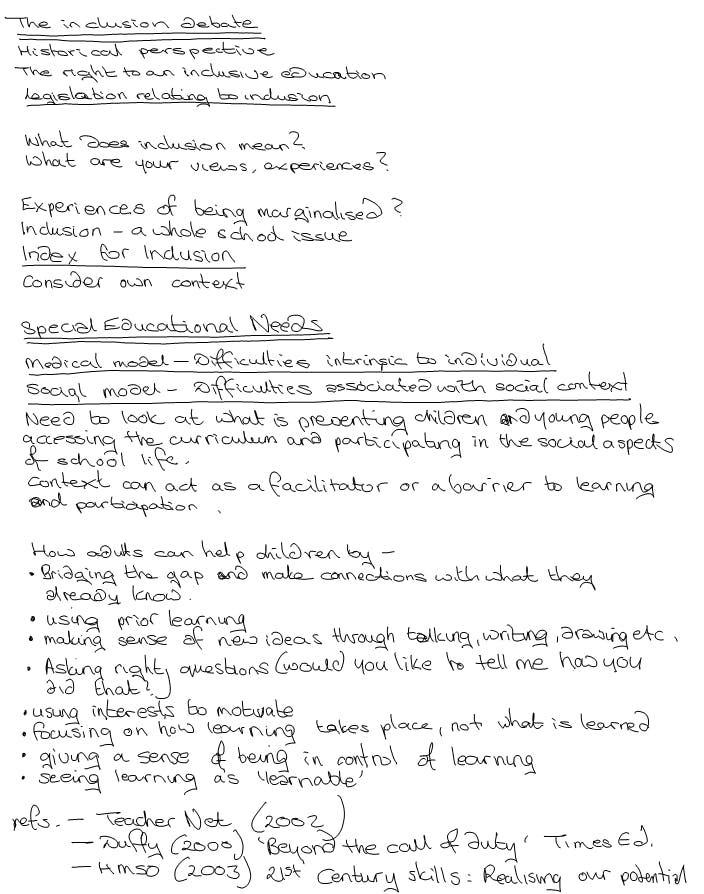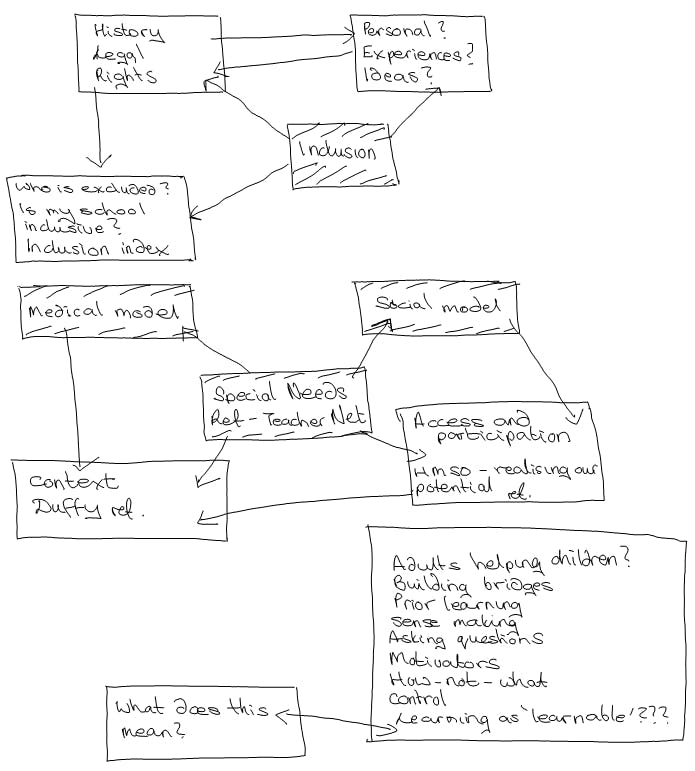Taking notes from speech Note-taking techniques
Taking notes from speech (in a lecture, tutorial or from recorded audio) can be difficult because it may not be possible to ask the speaker to repeat their words.
You may find yourself writing as fast as you can and still missing potentially important points.
- If you are given a handout at a tutorial, use this as the framework for taking your own notes.
- Try to find out what the subject will be beforehand so you're less likely to be taken by surprise and miss things. Read any relevant study material or notes.
- Become accustomed to listening intently. The speaker may signpost significant moments by saying things such as: "I will discuss three main ways in which ...", or "I would like to move on to another topic...".
- Be wary of noting down as fact what a speaker might mention as an example of a contentious view.
- Become used to thinking actively about what you are listening to. You probably don't need to take notes on everything so get used to identifying what does need to be noted down and what you can let go.
- Create a wide margin down one side of the notepaper you use to take notes. Later on, when you look at your notes again, use the margin area to précis or add extra notes.
- Of course you can rewind recorded audio when taking notes from it, but try not to do too much of this as it can take a lot of time.
- Try to re-read your notes soon after taking them. This will help to embed the content in your memory.
Do you write or draw your notes?
The notes shown in the images below were made by two students attending a tutorial about social inclusion and special educational needs. You can see their different ways of capturing the relevant information. Prior to the tutorial the students were told which chapters and study topics to read - preparation is worth doing as it helps you to concentrate on the key points during a tutorial.

This student summarised the key points and organised the themes into clusters of ideas. The student also noted down useful references. However, the notes are incomplete and should be expanded when the student revisits them.
The references listed at the bottom of the notes are not given in full and this would make them difficult to follow up later. So it's a good idea to add the full details to your notes as soon as you can.
The references when written out in full should look a little like this (be sure to check your module instructions on the formatting of references).
- Duffy, M. (2000) ‘Beyond the call of duty’ Times Educational supplement, 15 September.
- Her Majesty’s Stationery Office (2003) 21st century skills: realising our potential, London: HMSO.
- TeacherNet (2002) Qualifications for teaching assistants. http://www.teachernet.gov.uk/_doc/3086/

This student has used a flow chart to link the notes and make connections. It shows the same information, but the details are set out as a diagram.
Some people find it much easier to remember and understand information if it is mapped out in this way. Whichever method you adopt, you still need to revisit your notes to make sure they are well organised and coherent for you.